70.3 St. Croix is calling
Last year I put together a course preview for the Captain Morgan's Ironman 70.3 St. Croix and with year 26 of this classic race on the horizon, I have added many items that athletes have asked me in the lead up to the event in terms of how to prepare for the race and logistics associated with it. St. Croix offers challenges unlike many half Ironman events, starting with a whitecaps and no wetsuit ocean swim, heat, hills and wind on the bike and followed by a run with relentless hills and often stifling humidity. This race has no single leg that is easy. The bike course with over 4000 feet of climbing gets most of the publicity, but we’ll tell you all about the other challenges. I have tried to cover as much info as possible to get you ready before the event too. In the end, this race is more a battle with the course and oneself than it is with fellow competitors.
Going in, many feel that they are competing with other athletes for 70.3 World Championship (Tremblant) and Kona slots, but race director, Tom Guthrie and his team will again confirm this year on race day that the biggest foe is yourself and the course.
Of all the 70.3 events in WTC’s circuit, this event rewards athletes with high power to weight and very lean body fat and a ton of patience. Unlike flatter courses where aerodynamic positions are likely more important than weight, this is a course where watts per kilo have a big impact. Low body fat also means better thermal dissipation for those athletes. You have a few more weeks to lean up.
First I will walk you through how the event plays out and then I will guide you through some event specific preparation that might be unique in the 70.3 series.
The Swim Course
The St. Croix swim is held in a controlled harbor that is shut down for practice swims and on race day, and offers one of the nicest swims in all of triathlon.
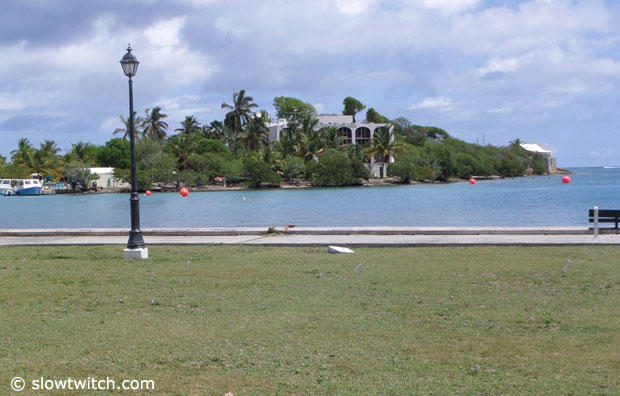
The water can be calm or really rough. Cross your fingers. Although the age group waves are small, the start of the swim can be rough with a tight circular left hand turn right out of the gate. Drafting can be tougher than a large mass start race especially since the swells and currents can create a lot of turbulence behind the person you are drafting. When exiting the swim, there is tall grass in the water, on your left near the swim wall exit. It might be worthwhile staying to the right of that, as some athlete have complained of small cuts. Also sometimes there is more of a current close to the wall near the Fort. Exit the swim via a race day ramp and you’re in T1.
The Bike Course and the Beast
The bike course is essentially an entire loop of the island with two smaller loops that you repeat at the start and the end. The splits from previous years may look slow because of all that climbing, chip seal pavement and T1+T2 included in the bike split. Do not be deceived. Whatever you do, take it easy early in the bike. If you follow a target wattage, you may want to drop it by 5-10% to account for the heat.
I say that because you’re going to forget all that in the first 20 miles of the bike, so I need to drill this in, ‘It’s not about the bike, it’s about the run.’ Everyone will be a Kona champion in the first 20 miles but these miles barely count in St. Croix. This segment of the bike course is ridden on turbo overdrive by many athletes, but it is not the place to burn matches. The racing in St. Croix only starts when you have climbed and descended the Beast.
The Beast is only a prologue for the entire day. It gets all the glory, but realistically the Beast won’t defeat a well prepared rider. The hills and wind on the other side will. The climb itself is only 0.8 miles in length, but has pitches in the 15-22% range depending on what line you chose.
Once you get down the Beast, the real racing starts. The winds will be high, the grades keep coming at you and the sun will be out. This entire section always has a big headwind, and rollers that actually turn upwards into serious climbs as steep as 15%. The hills, wind and technical turns provide constant challenges making pacing and nutrition management difficult. The final 10K or so repeat a loop you did early in the ride before coming home to T2.
The Run Course
What do you need to know know? Not much really. Your run pace will be the pace that you predetermined during the ride and during your run training. The run starts with some rolling hills on tarmac before a left turn into the Buccaneer resort. Once inside the Buccaneer, the resort can turn into a sauna in the areas where you are sheltered from wind. Do not let this get to you, it will get better, but then you have wind. The terrain is generally flat in this area except for the big climb over the top of the resort just before you exit and then return to transition. Loop 2 is where the fast guys will secure your Kona or 70.3 World’s slots. But once you are done loop 2, you’re still not done. There is a final detour through historic Christiansted that lasts around 1 km. It can be like a victory loop or an unnecessary torture loop as you pass within meters of the finish before heading back out for the city loop before the charge into the finish.
Pre Event: before you leave home
In preparing for the swim, make sure that your legs are well conditioned with kick sets and don’t be too overly reliant on a pull buoy. That might be fine for wetsuit swims but boat anchor legs won’t help much in St. Croix, even though the salt water there is perhaps some of the most buoyant on the planet. In terms of swim clothing, this is always a no wetsuit swim. Speed suits are recommended for some of the incremental speed gains as well as speed of transition.
Relative to bike equipment if you are riding wider width race wheels, then you have the luxury of riding at lower tire pressure (not too low as you don’t want flats), but riding in the 80’s to get a good combo of rolling resistance and comfort. As was the case in 2013, some editions have had heavy rain on the course too, so this is another reason to ride with slightly lower pressure if you have wide rims. Make sure before you leave home, that all your bolts and cages are tight. St. Croix is famous for launched bottles!
In terms of gearing, I’d recommend a compact and 34×27 for any athletes were at 4W per kilo or lower. Lower gearing may be better, but not an easy option for everyone (such as a cassette with a 32). There are always questions about which type of helmets to use, aero or vented. It is hot, so bring both from home and decide on race week in your pre rides. The speed answer is aero helmet, the comfort answer would be vented. The final decision is yours. How many bottle cages do you need? The stations are frequent and well stocked. So you likely don’t need more in St. Croix than at any other 70.3 if you choose to use the stations.
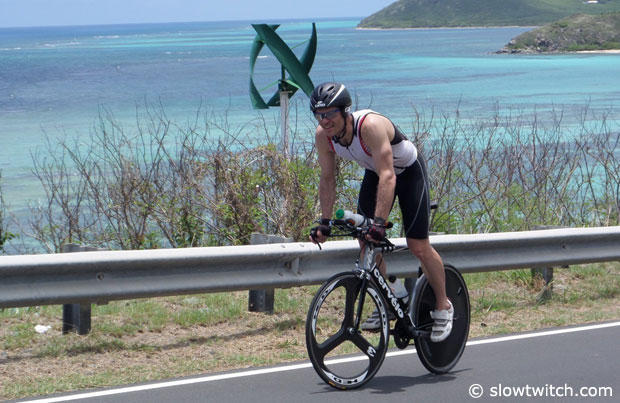
Those living up north may actually have a decent advantage for this race in particular given that you are doing many trainer rides and used to going hard with an elevated core temperature. As the weather turns, it might be good to keep 2 rides per week on the trainer to keep up that heat acclimatization. No need to do all workouts in the heat zone, because this also reduces the quality of workouts and you don’t want to lose fitness at the same time.
Heat is a big player on the St. Croix run as are hills. The last few weeks are probably not the best time to add a ton of hill intervals (given the pounding of descents), however, you could get some heat acclimatization in, and hill work at the same time, by adding treadmill hill repeats with no fan and no downhill running. This would be fine in your final few weeks before travel.
While training in the last few weeks, drive this into your head for race day. ‘It’s not about the bike, it’s about the run’ and please repeat this for your entire flight over to St. Croix and continue to remind yourself this until you get through the bike course.
In terms of travel and packing your gear with the number of flights to St. Croix and the number of people flying with bikes it is common for your bike gear to be delayed by the airlines. If you can travel earlier in the week it is better, but we understand, now always an option. As such, I strongly recommend that you travel with the following in your carry on. In the event your bike does not get there, you can rent and still not blow your vacation and race to complete if not compete.
• Swim skin, tri suit, goggles
• Bike shoes, pedals and optionally bike saddle (if you are picky and need to rent a bike), optional aero helmet clipped to outside of back pack
• Running shoes for race day (maybe wear them on your feet, although if you show up at the airport wearing Newtons and Mdot logos, it’s almost 100% sure you will pay airline bike fees)
• Race day nutrition if you are picky (as many triathletes are)
Pre Event (on site)
In the days leading up to the event, St. Croix closes down it harbor daily for a practice swim from 11am to noon. For athletes coming from northern climates, there is a very good chance that not a single part of your body has seen a ray of sunlight since October other than your face.
During these swims, the sun is directly vertically over your back. This is the place to get a race week sunburn that will bother you all week and potentially cause problems on the run during race day. Covering up and correct sunscreen are your friends.
The practice swims also offer the opportunity to sight. Note, that the position of the sun in the sky is totally different during practice swims versus race day when you are swimming after 6:30 am. Sighting points using large landmarks should be established rather than buoys. Enjoy the scenery during the practice swims. This is one of the most beautiful swims in the sport.
Riding in St. Croix is on the left side of the road. It is useful to do a bit of riding to get bearings for those of us from nations that drive on the right. The pavement often has many parts that are upgraded for race week, but there are parts that are rough too. In 2013 the race was preceded by torrential downpours that lasted 8 hour barely clearing up in time for the race. But when there is rain, there is a lot of mountain run off onto the roads with dirt and gravel. A useful cue when riding is if you see the color of the pavement changing ahead, it likely has a lot of dirt and gravel. Be careful riding these parts. If it happens on race day, during these parts, you are not racing, you are keeping your bike upright. Use practice rides to be aware of this.
Also on the first and last loop, there is a decreasing radius high-speed downhill that comes on the way back in to town. Several of the grades on the course are also very deceptive and start at low grades and pitch up to 8, then 10 then up to 15%. Practicing gearing down early during your race week rides will be good so you don’t get any dropped chains or other mishaps on race day trying to shift at the steepest points on the course.
Race week we often see a lot of athletes running all around St. Croix. It probably would be better to focus most of the training onsite on the swim and bike and not deplete oneself too much trying to acclimatize to the heat with a ton of running. There is not that much that can be achieved in a few days.
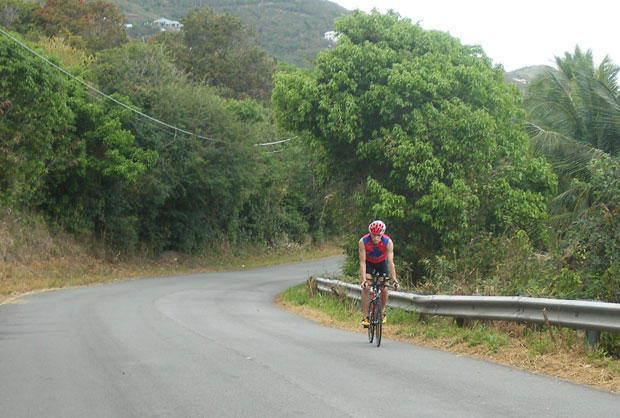
During the pre-race briefing do not ask Tom Guthrie what the expected weather will be. He will give you the standard answer that has been given for 25 years. Look up in the sky and it will be the same. Hot, windy and humid. What he did not tell us last year is that if it rains hard and the run comes up for the run the place turns into the worst sauna you may ever run in. Don’t worry about the Garmin pace times. Just run by perceived exertion in St. Croix
The day of the Event.
First order of business is sun screen. This is your free shade, because when you leave the transition zone which happens to have one of the few trees that you can actually get shade from during the entire race, you won’t see an ounce of shade for the rest of the day’s racing.
Prior to the race (actually before the 6:30am Pro start), all athletes need to swim around 200m over to the island where the Hotel on the Cay is located. If you have a routine of downing a gel of small drink, you’ll need to do this before you swim over or swim over with it. The nice thing is you get an up close and personal view of the pro start and a good chance to mingle with athletes from all over the world. Take it in, as this is probably the most international field in North America outside of a championship event.
Pace well, save yourself for the run, don’t charge the first hour of riding to the Beast. The racing starts after that. But here is our Beast climb rapid fire Q&A sequence for the 0.8 mile ascent.
Q1: What gearing do I need?
A1: As low as you can put on your bike. 34×27 on 700c wheels is a good starting point for most of us other than the very pointy end Kona qualifier crew.
Q2: Do I sit or stand?
A2: Sit until you run out of gears, then stand. You won’t have much of choice.
Q3: How hard do I go?
A3: You don’t decide how hard you go, the Beast dictates that for you. It is like fighting the gorilla. The fight only ends when the Gorilla decides. The quick answer is you will probably need to go as hard as you can to stay upright. All kidding, aside, as soon as you turn left to start the Beast, gear down to your lowest gear. Start as easy as possible. It will get very difficult very quickly.
Q4: How steep is it?
A4: It is 15-22% or more. Ride the outside of the bends which are less steep. The inside is very steep. Also if it is raining, your rear tire can spin out, so you may need to sit the steepest parts to keep traction. Please make sure your lowest gear is working well.
Q5: If I stop can I restart?
A5: It is so steep that it is difficult to clip back in. Probably better to walk. Frankly it won’t be that much slower!
The descent of the Beast can be quite tricky especially if there is a torrential thundershower. Be careful there and make sure your super bike’s aero brakes are fully functional.
After this point, be attentive to your nutrition as it is very easy to lose track of given all the topographical challenges. This is not a course where you can put your head down, dial in your watts and focus on nutrition that easily, so it does require extra attention.
During this entire section it is easy to forget about nutrition. The pavement requires your attention and with the constant undulations and gear changing, especially in the lead up to the Divi Carina Bay, you may totally forget about drinking and eating until it is too late.
The back side of the Beast has many hills including some 15% grades and you’ll see them well ahead if you did not pre-ride them. Gear down early, to your easiest gear. Don’t try to power over and be one of those guys fumbling with gearing ¾ way up and missing shifts under tension. Soon you will be around the far end of the Island passing close to Point Udall, the Eastern most point in the USA. There are lots of rollers from here into T2. This is also where you should fuel up for the run. The pavement here in the past has been rough, so be attentive.
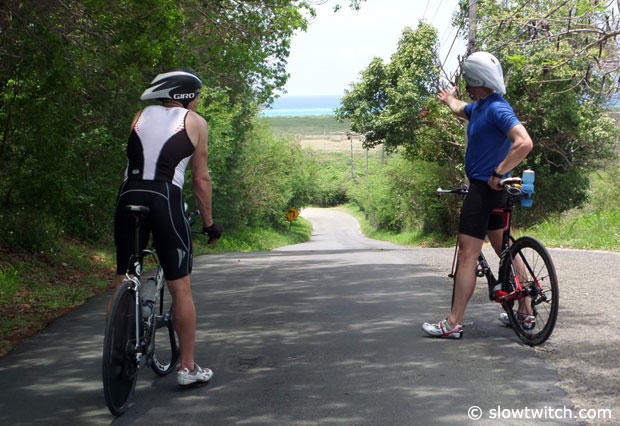
Out of T2, you may want to leave with a small bottle of SPF50 to smear over yourself as you run. You will quickly feel the stifling heat. The run aid stations in St. Croix are very well stocked. Take advantage of the ice that is offered. Running with ice in your singlet pockets and in your hands can be mentally soothing. We won’t delve into the actual physiological cooling benefits and will leave that to science, but if nothing else, it is mentally soothing and reduces the pain.
Loop 1 still requires a lot of patience. A half marathon is long way. Depending on your run capabilities, most athletes would be well advised to dial back on all the climbs leading to the Buccaneer resort. If we get a sunny humid year, the times can be quite slow, especially for larger athletes. Most of the top athletes in 2013 were 10-15 min slower on the run than what they do at flatter races, so almost a minute per mile. Don’t be alarmed, go by perceived exertion. There are not that many places that athletes come from that can prepare us for this combination of heat and humidity.
Save your energy largely for loop 2 if you intend to race because this is when the real racing truly starts. Everyone slows down by then. An extra minute fast on loop 1, can be 10-20 min slower on loop 2. Keep running, and don’t walk. Shuffling is 3x faster than walking. If you paced well, you’ll have a massive smile on your face, and if you forgot, you will be cursing me, but that is ok, I told you so. There is always next year!
Into the final loop through Christiansted downtown, there are big crowds, so you want to look like 2013 champions Richie Cunningham or Cat Morrison cruising through. Looking good seems to get the crowd cheering for you. They are happy you are on their island. Draw energy from their cheers.
After the racing is over, St. Croix has one of the best after parties in the sport at the Divi Carina Bay resort. It is a must for all athletes. You’ll probably meet athletes from all over the world who will invite you to come and play in their corner of the world. It is a great place for the post event analysis, paralysis and excuse sharing, that we are all notorious for, while celebrating our champions and getting 1 on 1 time with many professionals who gracefully make themselves available to age group participants.
There is one more new item in 2014 for those racing and bringing down a contingent of friends and family. The St. Croix triathlon adds a relay division this year, so it is perfect for your friends to come over and put a big training camp in and rev it up on race day in a single sport.
Devashish Paul is or lifestyle contributor to Slowtwitch.com and is based out of Ottawa Canada. He has competed in St. Croix 4 times and raced at on 4 continents at all distances, doing 24 full Ironman events and over 75


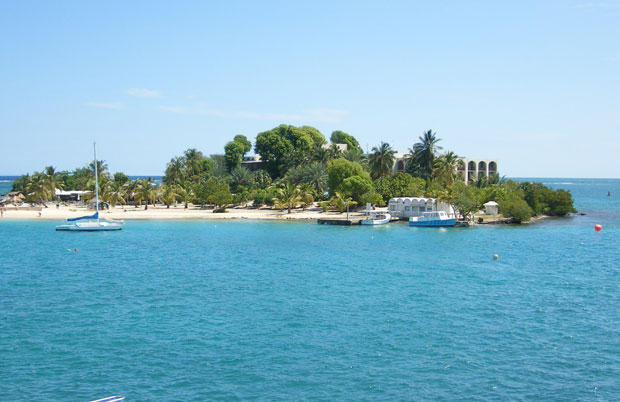
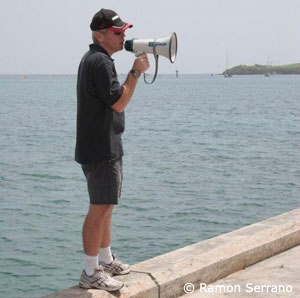
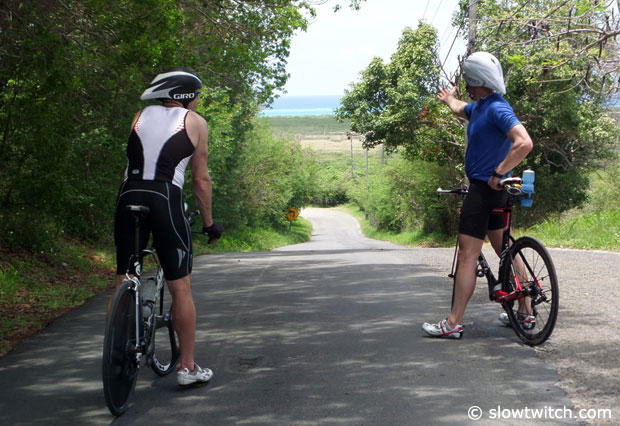
Start the discussion at slowtwitch.northend.network